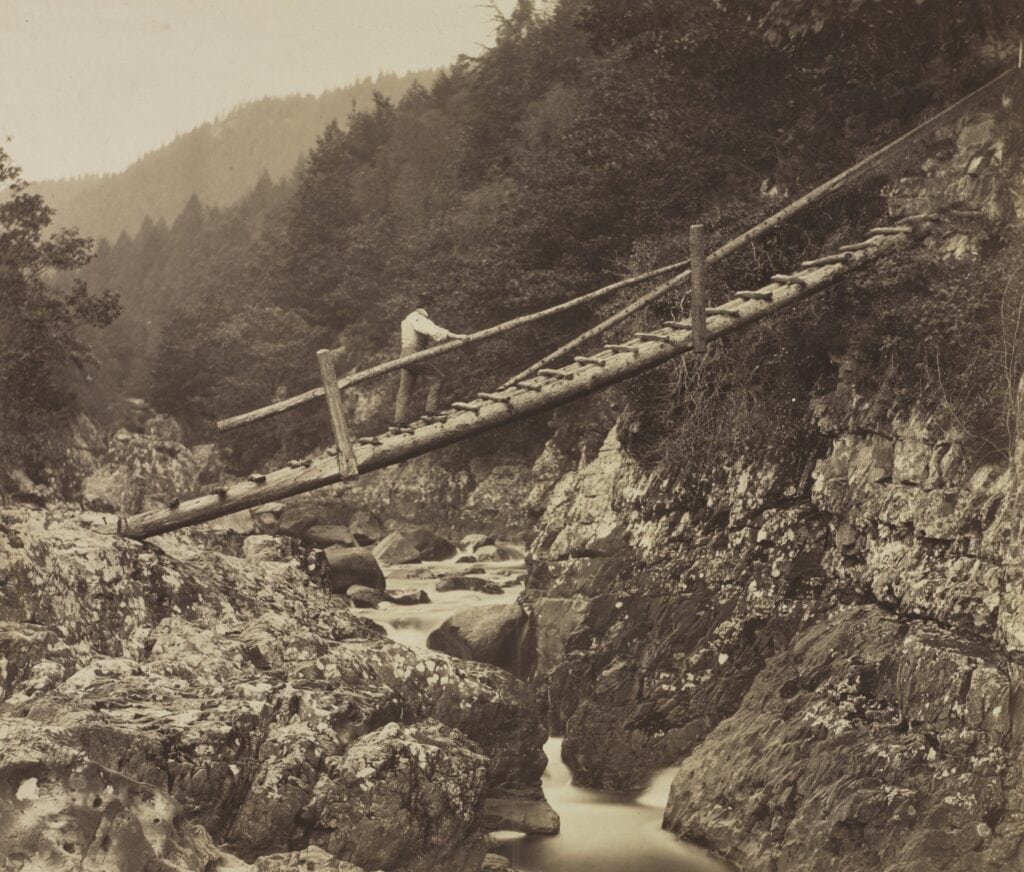
The collodion process of 1851 transformed how images were made, shared, and preserved.
It was also known as wet-plate photography and involves coating a piece of glass with a collodion emulsion, sensitising it in silver nitrate and then taking the picture immediately so that it can be developed whilst the plate is still wet.
Collodion ushered in a new standard of clarity and reproducibility compared to earlier processes, while albumen prints brought a mass-produced format into family albums and parlours.
However, during the collodian era, there was an extensive range of methods to create images, including direct positives as well as prints.
I found the easiest way to get to grips with the various media types made from the collodion process was to put them in a table, which you can see below.
Each medium had its strengths and limitations and collectively they shaped a photographic era that bridged the artisanal origins of photography and its industrialized roll-film coming of age.
| Medium Introduced | Description | Positive/ Negative Main Uses | Pros | Cons |
| Albumen Print 1850 | Paper coated with egg white (albumen) and silver salts, contact printed from negatives. | Positive (print) Dominant 19th-century print process | High-gloss surface, fine detail, warm tonal range; could be mass-produced. | Faded easily without good fixing/washing; labor-intensive coating process. |
| Ambrotype 1854 | Under-exposed collodion negative on glass backed with black to appear as positive. | Negative used to make a unique Positive Studio portraits; popular keepsakes. | Cheaper and faster than daguerreotypes; sharp detail; less reflective. | Unique image (no copies); fragile glass; limited tonal depth. |
| Tintype (Ferrotype) 1856 | Under-exposed collodion negative on black-lacquered iron, exposed as direct positive. | Negative used to make a unique Positive Working class portraits, itinerant/carnival photographers. | Durable, cheap, quick to produce; popular for portraits/traveling photographers. | Lower image quality; usually small format. |
| Salt Print 1839 | Paper soaked in salt and silver nitrate, contact printed from a negative. | Positive (print) Early landscapes, architecture, scientific documentation | Soft tonal range, relatively easy to produce, allowed multiple prints. | Survived in low volume into collodion era, but prone to fading; less detail than albumen prints. |
| Collodion Positives on Paper 1850s | Direct collodion image on paper to serve as a unique positive. | Positive Experimental niche process | Lightweight inexpensive positives. | Rare; lacked popularity and longevity. |
| Carte de Visite (albumen format) 1854 | Multiple small albumen prints from collodion negatives mounted on card. | Positive (print) Mass social phenomenon; portraits of family/celebrities | Cheap, portable, mass-produced, socially fashionable. | Small size limited artistic impact; often faded. |
Footnote: Later Nineteenth Century Processes
After the collodion era gave way to more convenient dry plates, photographers began experimenting with more artistic printing methods. These “exotic” processes were less about sharp detail and more about mood and craftsmanship. Platinum and palladium prints created soft, velvety tones; gum bichromate and carbon printing added painterly layers of pigment; oil and bromoil let artists brush ink directly onto the image; and photogravure gave photographs the richness of fine art prints. Together, they defined the Pictorialist movement of the 1890s–1910s, when photography strove to look and feel like art.
Further Reading
For more on early photography you might consider these articles, which also be found on this site: